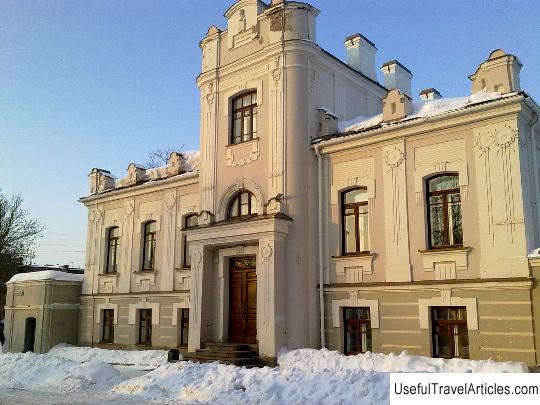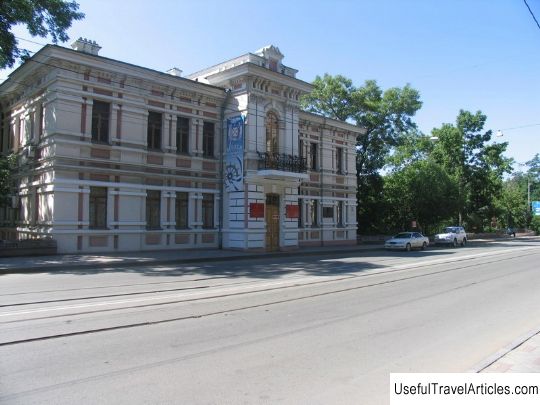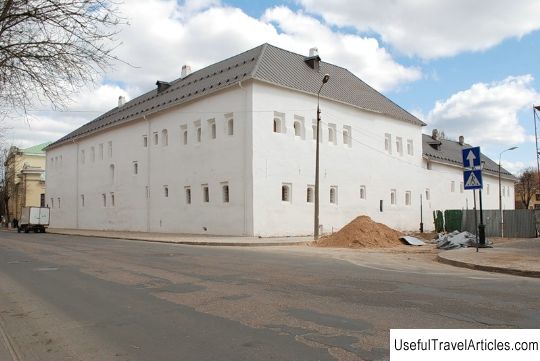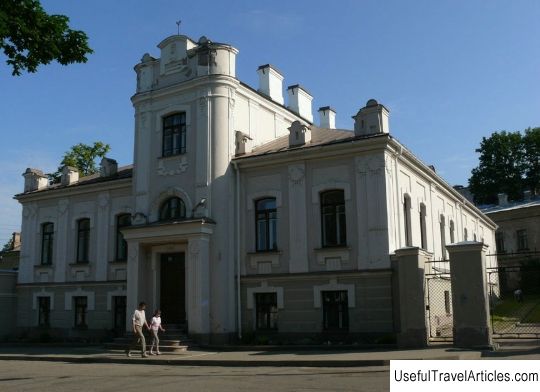Fan der Fleet building description and photos - Russia - North-West: Pskov
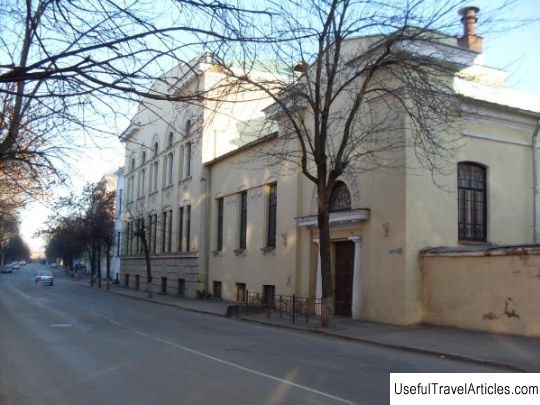
Fan der Fleet building description and photos - Russia - Northwest: Pskov. Detailed information about the attraction. Description, photos and a map showing the nearest significant objects. Photo and descriptionThe famous building named after Fan der Fleet is an industrial school of the same name and is part of the complex of buildings of the State Historical, Architectural and Historical Museum of the city of Pskov. The establishment of the school was carried out by the Pskov Archaeological Society, and had a goal: to train workers in ceramic, carpentry and carpentry and metalwork and blacksmithing. The art and craft school appeared in 1900 with the funds of Elizabeth Fan der Fleet, and the constructed educational institution was named after her husband, Nikolai Fedorovich Fan der Fleet, a zemstvo activist, as well as an active participant of the Pskov Archaeological Society, who came up with the idea of creating an art-industrial school. After some time, after the start of the school, The Pskov Archaeological Society received the outbuildings of the Pogankin Chambers, which were previously occupied by the tseikhhaus - a military storeroom for ammunition and various kinds of weapons at the Yenisei Infantry Regiment. It was decided to arrange a new separate building for the school of art and industry. But fate decreed that it would not be possible to implement this idea in a short time, since the War Ministry carried out the transfer of the necessary buildings only in 1910. Throughout 1911, talented architects made up a considerable number of projects for the proposed future construction. The document, which was developed by the assistant to the provincial architect in the city of Pskov, namely the civil engineer Nikita Nikolayevich Klimenko, was fully approved by the Imperial Archaeological Commission. By the summer of 1913, a new building was ready for the school. It should be noted that the work was carried out by the construction contractor Ilyashev Abram. During the construction, the price included central heating, some part of the exhaust and central ventilation, a special device for the building for tiled ventilation, as well as a sewage system to clear pipes from blockages and a water supply for drinking. In addition, the entire building was fully equipped with fire and industrial systems. The grand opening of the school took place on October 23, 1913. One could get to the central educational building by walking along Zlatoustovsky lane, to the wing of which a small part with the Great Hall adjoined along Gubernatorskaya Street, as well as entrances for the public; there was a wing on the side of the yard, which was connected by a small passage with a special section of the glass-blowing workshop "Shater". The building of the art and craft school with the Pogankin chambers formed a kind of closed complex of structures under the authority of the Pskov Archaeological Society. The school building was planned so that all workshops requiring precautions, high temperatures or disturbing peace and quiet, were located on the ground floor of the premises. For example, in the semi-basement there was a plaster-forming department, premises for storing finished products and various materials, and a turning workshop. On the first floor, it was decided to arrange a teacher's room, a library, a woodcarving class and a composition class. On the upper (second) floor, those departments were located that required light and silence - this is a drawing class, an exhibition hall, a department of ceramic painting, as well as the apartment of the head of the entire school. The main building of the school was almost completely destroyed during the Great Patriotic War, and in 1947 it was completely dismantled. Only a small part of the building "Tent" and the building on Nekrasova, located in the depths of the courtyard, have survived. During 1971-1979, on the site of the previously existing educational building, as well as the "Tent", in connection with the preserved part of the artistically - craft school named after Fan der Fleet, a new building was erected, which currently houses the administrative premises of the Pskov Museum-Reserve and exhibits. The main building of the school was almost completely destroyed during the Great Patriotic War, and in 1947 it was completely dismantled. Only a small part of the building "Tent" and the building on Nekrasova, located in the depths of the courtyard, have survived.During 1971-1979, on the site of the previously existing educational building, as well as the "Tent", in connection with the preserved part of the artistic - craft school named after Fan der Fleet, a new building was erected, which currently houses the administrative premises of the Pskov Museum-Reserve and exhibits. The main building of the school was almost completely destroyed during the Great Patriotic War, and in 1947 it was completely dismantled. Only a small part of the building "Tent" and the building on Nekrasova, located in the depths of the courtyard, have survived.During 1971-1979, on the site of the previously existing educational building, as well as the "Tent", in connection with the preserved part of the artistically - craft school named after Fan der Fleet, a new building was erected, which currently houses the administrative premises of the Pskov Museum-Reserve and exhibits. in connection with the preserved part of the art and craft school. Fan der Fleet, a new building was erected, which currently houses the administrative premises of the Pskov Museum-Reserve and exhibits. in connection with the preserved part of the art and craft school. Fan der Fleet, a new building was erected, which currently houses the administrative premises of the Pskov Museum-Reserve and exhibits.      We also recommend reading Mount Chuenisbaergli description and photos - Switzerland: Adelboden Topic: Fan der Fleet building description and photos - Russia - North-West: Pskov. |

